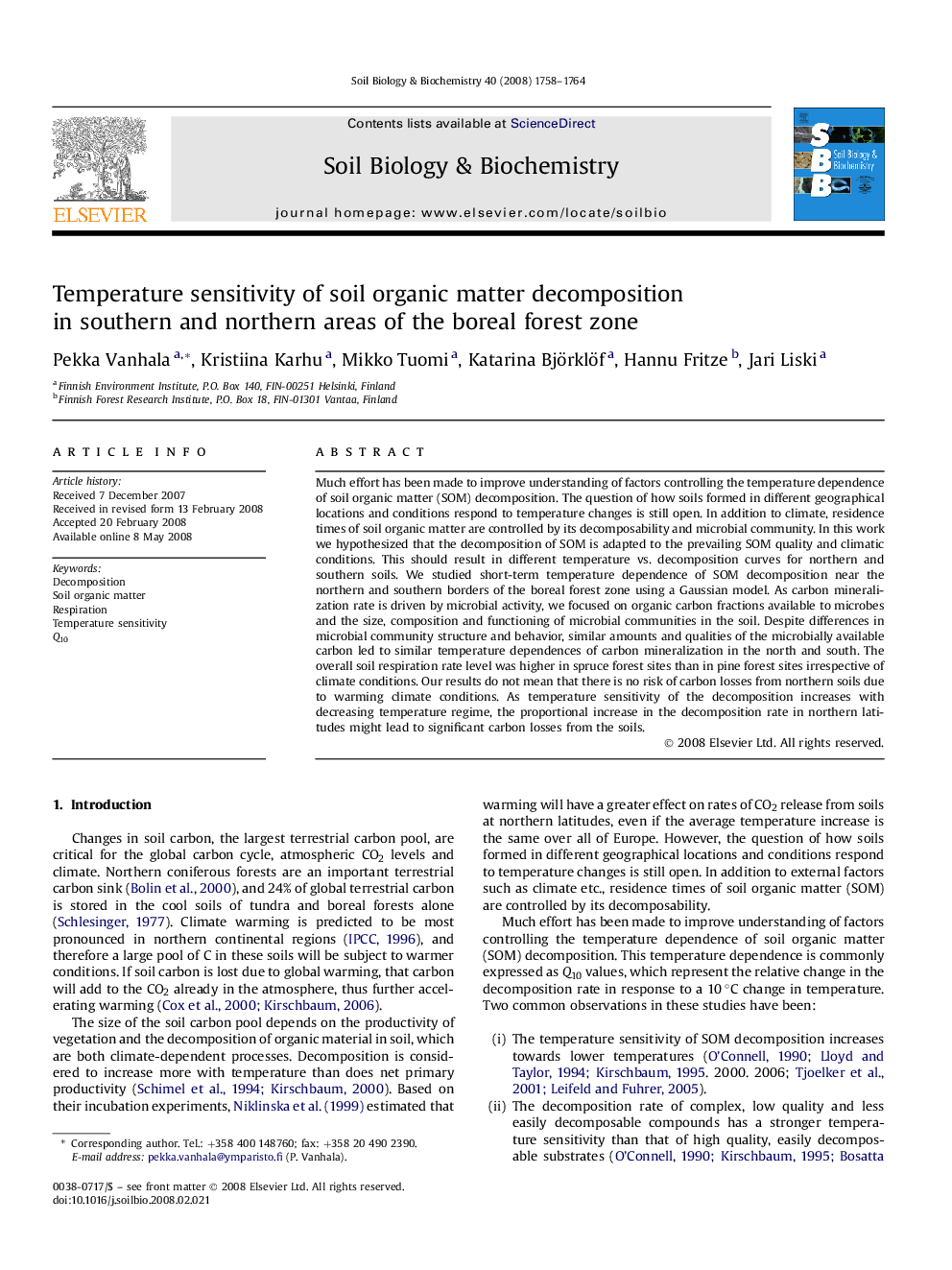| Article ID | Journal | Published Year | Pages | File Type |
|---|---|---|---|---|
| 2025829 | Soil Biology and Biochemistry | 2008 | 7 Pages |
Much effort has been made to improve understanding of factors controlling the temperature dependence of soil organic matter (SOM) decomposition. The question of how soils formed in different geographical locations and conditions respond to temperature changes is still open. In addition to climate, residence times of soil organic matter are controlled by its decomposability and microbial community. In this work we hypothesized that the decomposition of SOM is adapted to the prevailing SOM quality and climatic conditions. This should result in different temperature vs. decomposition curves for northern and southern soils. We studied short-term temperature dependence of SOM decomposition near the northern and southern borders of the boreal forest zone using a Gaussian model. As carbon mineralization rate is driven by microbial activity, we focused on organic carbon fractions available to microbes and the size, composition and functioning of microbial communities in the soil. Despite differences in microbial community structure and behavior, similar amounts and qualities of the microbially available carbon led to similar temperature dependences of carbon mineralization in the north and south. The overall soil respiration rate level was higher in spruce forest sites than in pine forest sites irrespective of climate conditions. Our results do not mean that there is no risk of carbon losses from northern soils due to warming climate conditions. As temperature sensitivity of the decomposition increases with decreasing temperature regime, the proportional increase in the decomposition rate in northern latitudes might lead to significant carbon losses from the soils.
